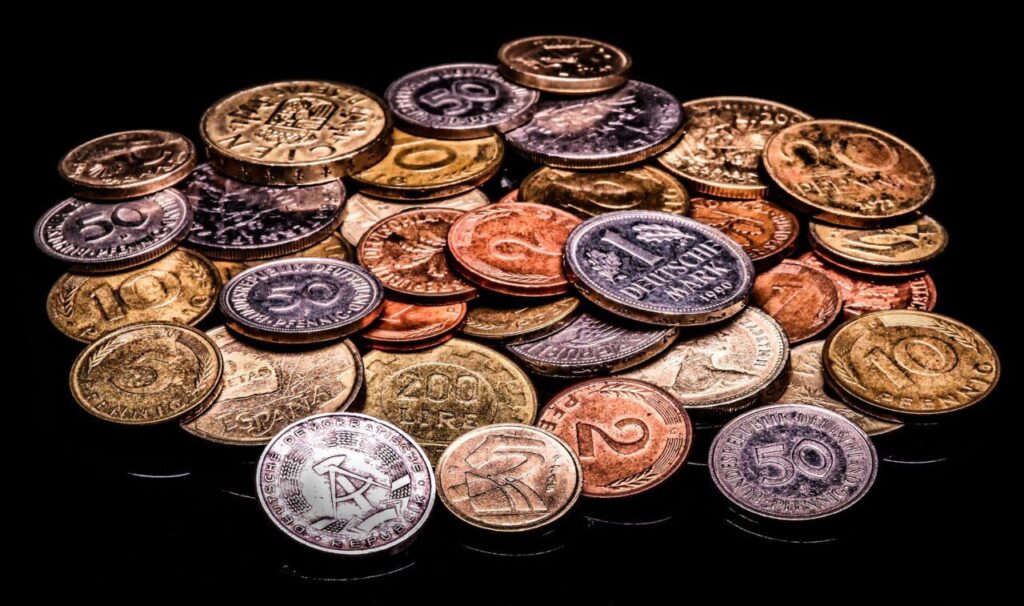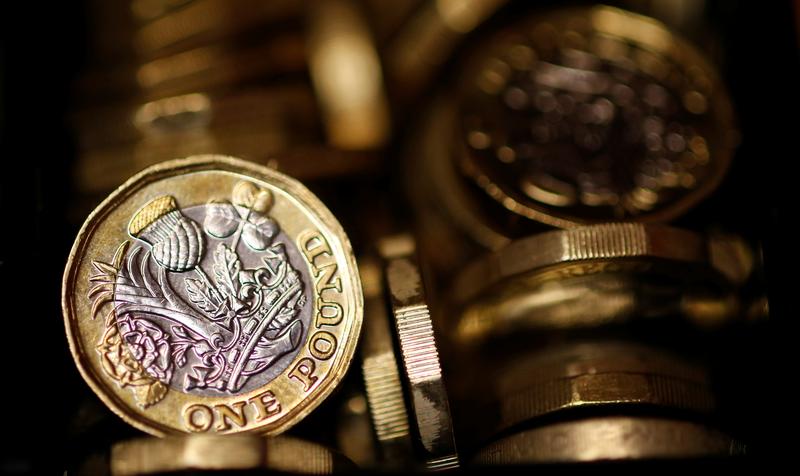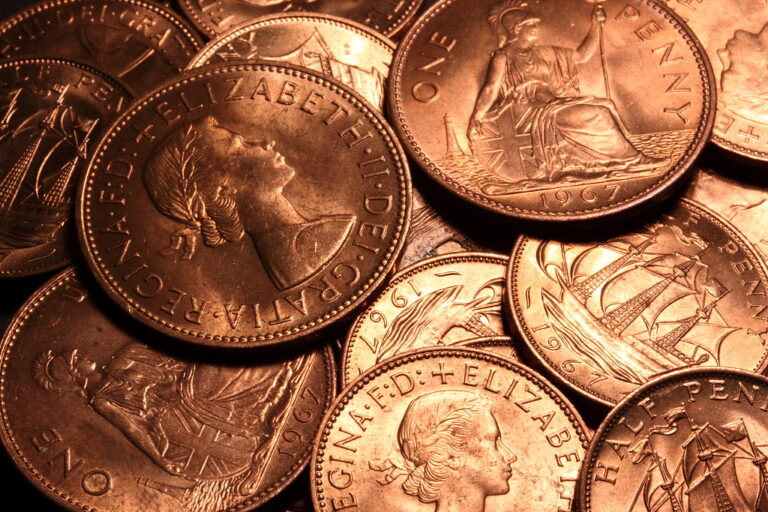In the context of British currency, the shilling was in use until the United Kingdom decimalized its currency in 1971. After decimalization, the shilling became worth 5 new pence. The pre-decimalization shilling (worth 12 old pence) was revalued at 5 new pence after decimalization in 1971.
In terms of the current British currency, there are 100 pence in one pound (£1). So, if 1 shilling is equivalent to 5 pence, then it would be worth a fraction of a modern-day pound.
Therefore, the approximate value of a shilling today after accounting for the 1971 decimalization would be about 4.17 pence (£0.0417) in today’s British pounds.
What is the History of the British Shilling?

The British shilling was a unit of currency that had a long history in England, dating back to Anglo-Saxon times. Its origin lies in the Roman denarius, which was a silver coin used in the Roman Empire.
The word “shilling” itself comes from the Old English word “scilling,” which meant a measure or division of something. Originally, it referred to a unit of weight for silver. In the 16th century, during the reign of Henry VII, the shilling became a distinct coin in England, made of silver.
During its history, the shilling went through various changes in terms of its weight, size, and value due to fluctuations in the availability and value of silver. It was subdivided into 12 pennies, and the plural form was often referred to as “shillings” rather than “shilling.”
In 1971, the United Kingdom decimalized its currency, and the shilling was replaced by the new decimal currency system. Under this system, the shilling became worth 5 new pence.
Throughout its existence, the shilling featured different monarchs on its face, and it was widely used in trade and daily transactions until its discontinuation in the decimalization process.
The shilling remains an important part of British monetary history, and while it is no longer in circulation, it holds a nostalgic and historical significance for many people.
How to Convert a Shilling’s Value to Modern Currency?
Converting the value of a shilling to modern currency depends on various factors, including the time period you’re referencing and the specific value of a shilling during that era. Here’s a general guideline for converting the value of a shilling to modern currency:
Identify the Time Period
The value of a shilling has changed over time due to inflation, economic changes, and currency reforms. For instance, before 1971, when the UK decimalized its currency, the shilling was divided into 12 pennies. After decimalization, the shilling became worth 5 new pence.
Consult Historical Exchange Rates
If you’re looking to convert the value of a shilling from a specific historical period, you’ll need to find historical exchange rates between the currency in question (British pounds, shillings, or pence) and the modern currency you want to convert it to. Several financial and historical databases may provide these historical exchange rates.
Consider Inflation
If you’re converting the value of a shilling from a much earlier period, you’ll also need to consider inflation. Various online inflation calculators can help adjust for inflation between different years. These calculators provide an estimate of the modern-day value of an amount of money from a specific year, accounting for changes in the cost of living.
Use Historical Pricing Data
Historical pricing data for goods and services from the period you’re interested in can also help give you an idea of the purchasing power of a shilling at that time. You can compare the prices of items then to their equivalent prices in modern times to estimate the relative value.
Online Currency Converters
Some online currency converters might have historical currency conversion features, allowing you to input the historical value of a shilling and convert it into the modern currency of your choice.
Consult Historical Sources
Historical documents, books, or records might provide insight into the relative value of a shilling during a particular period.
What Factors Influence the Accuracy of Determining a Shilling’s Present Worth?

Determining the present worth of a shilling or any historical currency involves several factors that can influence the accuracy of the calculation. Here are some key factors that affect the accuracy of determining a shilling’s present worth:
Time Period
The time period during which the shilling was in circulation significantly impacts its value. Historical currencies often fluctuate in value due to inflation, economic changes, and currency reforms.
Therefore, the further back in time the shilling was used, the more difficult it becomes to accurately assess its present value due to changes in the economy and purchasing power.
Inflation and Purchasing Power
Inflation is a major factor affecting the value of money over time. The rate of inflation and changes in the cost of goods and services influence the purchasing power of a shilling. As time passes, the value of money decreases due to inflation, making historical currencies worth less in terms of what they could purchase compared to modern times.
Exchange Rates and Currency Systems
Historical exchange rates between the shilling and other currencies or systems play a crucial role in determining its value. Historical fluctuations in exchange rates, currency devaluations, or revaluations impact the shilling’s value when converted to modern currency.
Availability of Data
The availability and accuracy of historical data, including exchange rates, prices of goods and services, and economic indicators from the time when the shilling was in circulation, influence the accuracy of present-day conversions. Limited or inconsistent historical data can make it challenging to precisely determine the shilling’s current value.
Method of Calculation
Different methods, such as using inflation calculators, comparing historical prices of goods, or referencing historical exchange rates, may yield varying estimates of the shilling’s present worth. Each method has its limitations and may provide different perspectives on the shilling’s value in today’s terms.
Economic Stability and Global Factors
Economic stability, geopolitical events, and global economic factors can also affect the accuracy of determining the present worth of a historical currency. These factors impact currency values and purchasing power in complex ways.
FAQ’s
Is a shilling rare?
Shillings are not exceptionally rare, but their circulation ceased after decimalization in 1971, making them collectible items.
Can I sell a shilling?
Yes, you can sell shillings. They’re often traded among collectors or in numismatic markets for their historical value.
Are shillings real silver?
Earlier shillings, minted before 1920, were made of 92.5% silver. Post-1920, they were composed of 50% silver until 1946, after which they were made of cupronickel.
When did the UK stop using shillings?
The UK stopped using the shilling as a part of its currency after the decimalization process on February 15, 1971.
When did we lose shillings?
The shilling was phased out during the transition to decimal currency in the UK, culminating in its discontinuation on February 15, 1971.
What is bigger than a shilling?
In the pre-decimal UK currency system, the pound (£) was bigger than the shilling, as 1 pound was equivalent to 20 shillings.
Final Words
In conclusion, understanding the worth of a shilling today involves looking back at its history. The British shilling, once valued at 12 old pence, was changed to 5 new pence after the country decimalized its currency in 1971. Converting its value to modern currency, it would be roughly equivalent to about 4.17 pence today.
However, this estimation might vary due to factors like inflation, economic changes, and historical currency fluctuations. While it’s essential to grasp its approximate worth, acknowledging the limitations in precise determination is crucial.

